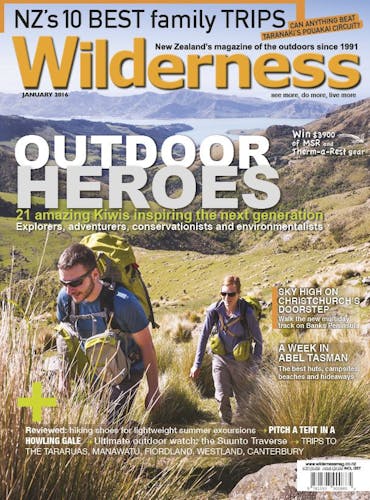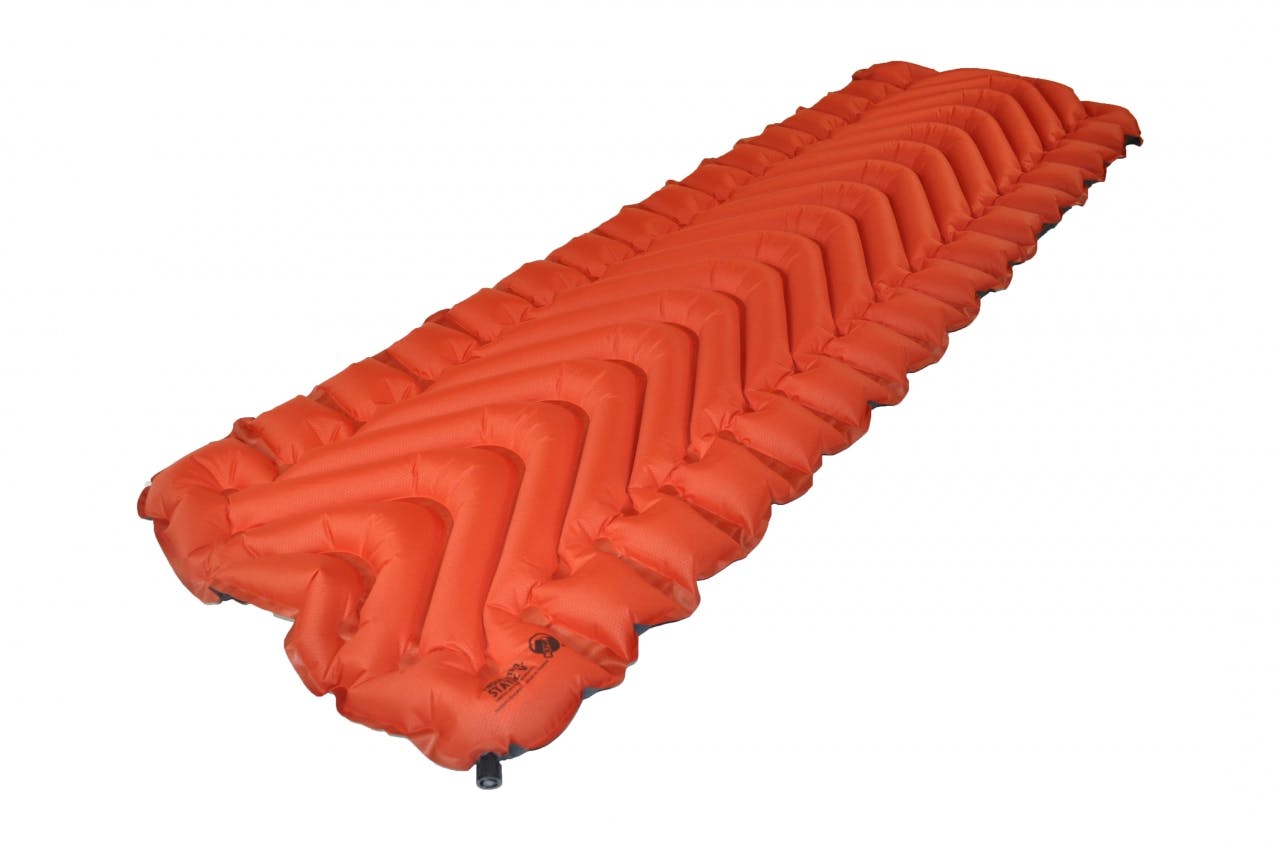Round the Mountain Trick
Although we have walked the Round the Mountain Track in Tongariro National Park a number of times over the years, the Wilderness article, Perfect Circles (November 2015), encouraged us to do it again. On previous occasions, whether going up or down, the section of the Ohakune Mountain Road has been undertaken grudgingly and severely dented our enthusiasm for a repeat visit.
But a moment of inspiration on our most recent visit – heading clockwise from Whakapapa – led us to an alternative that avoided this. Although it was a short deviation it was very enjoyable and gave us a sense of adventure that the road trip certainly wouldn’t have engendered.
We turned right onto the track turn-off to Blyth Hut. From the hut, the map shows a poled route heading uphill for a short distance then petering-out. Actually, the poled route appears to go up to the ski field although we didn’t follow it all the way. At a point (roughly BJ34 161442) we headed left, off-track, following the contour through tussock to a point on the Mangawhero Stream opposite the Massey Alpine Club hut. A brief scramble down, across, and up the other side saw us on the mountain road about 200m below the Mangaturuturu Track entrance.
The diversion could be followed in the opposite direction as the poled route from Blyth Hut should ensure the tramper doesn’t go too far east and miss the track to the hut.
– David & Christine Sidwell, Karekare Beach, Auckland
For their neat alternative to the Ohakune Mountain Road, David and Christine receive a Klymit Insulated Static V Sleeping Mat worth $199.95 thanks to www.outfitters.net.nz. Readers, send your letter to the editor for a chance to win.
Loop the loop
I enjoyed the article on loop tracks (‘Perfect Circles’, November 2015). One track not on the list but that every tramper should consider is the Tuatapere Hump Ridge Track in Fiordland. It was a huge project by the small community in response to losing its native logging industry. The track is a 63km, three-day walk operated by a community-based charitable trust.
The two lodges are extremely comfortable and provide a unique stopping point on the walk. The kitchens are fully equipped, so there’s no need for heavy packs.
– Ray Willett, Te Anau
The walking group phenomenon
I was caught up in a wave of enthusiasm in the mid 1980s when it was suggested I set up a midweek walking group (‘To all those who think they’re past it’, October 2015).
Kapiti has a high proportion of retirees, many of whom have tramped when younger and would like to take it up again. Those who had no previous tramping experience were also interested, but diffident about their abilities.
Half a dozen turned up at first but after six months this had escalated to 60. We walk fortnightly on a Monday, in three groups, to allow people to walk at a pace which suits them. The walks are generally 4-5 hours, there is no membership, no subs, no fundraising, no cancellations: just turn up on the day with your $4 to cover recce costs.
A Sunday group evolved for the workers and another on Wednesdays for those requiring shorter, easier tramps. After a short time, these groups were self-organised and working along the same lines.
A feature of our group is the annual week-long trips further afield. These have covered both North and South Islands. A comfortable venue is chosen for the base and day walks arranged in the surrounding areas.
It is interesting to observe a pattern emerging with those who have been Kapiti Weekday Walkers over many years, gaining confidence and fitness, becoming leaders and then in time, as fitness diminishes, stepping back to the easier groups and thereby remaining part of the social structure. Over the life of the group, great bonds have formed and a noticeable willingness to support each other in daily life.
From small beginnings, the walking group has provided participants with an expanding network from which many wider activities developed.
– June Rowland, Raumati Beach
In knots
The December 2015 issue featured a photo story demonstrating how to tie a bowline knot. The pictures are actually of a knot known as a Dutch bowline or Cowboy bowline. The normal bowline has the tail coming out in the middle of the knot, not on the outside as in the pictures.
– John Cooper, Hawera
No Better, No Worse
Deciding which is better, the North Island or South Island (Pigeon Post, December 2015), is an interesting discussion, but irrelevant.
Though different, both islands are enjoyable in their own way. I have had wonderful tramping experiences down south, but walking the Te Araroa Trail last summer gave me plenty of time for reflection.
As a Northlander, I was constantly amazed at the new vistas and different views at every turn. Of course, the beaches are magnificent, and taking the route from west coast to east coast via four forests is a brilliant introduction to the subtropical botany of the north.
The ubiquitous citrus smell of hangehange in September gave way a week later to the delicate scent of mingimingi, the trail littered with clematis petals, and scrambling white rata. Tree ferns marching south along with flaxes, and shores lined with scrambling pohutukawa limbs. Green-hooded orchids, and creamy tree ones emerging from secret dark spots in November.
The east coast beaches were charming, easy walking – and all different.
Sure, the South Island has fantastic mountains, views, lakes, rivers and challenges; scenery unsurpassed, but most TA walkers have figured out that our islands are quite different; and nearly all of them enjoy the people-contact in the North Island.
There are already multiday track systems in the far north, Waikato and in the Waitakeres, but as for building more huts, well the mild climate allows people to be safe with tent-camping.
As for ‘backcountry culture’, northerners will get there as time and money allow them to.
– Ros Cole-Baker, email
Recreate, don’t procreate
In the December issue there are several references to children and the outdoors. I will be seen as a wet blanket for mentioning this, but one of the worst things a nature lover can do to the environment is have children. Everyone on earth, however environmentally conscious, makes some desecration of nature. We have to, just to survive. And by producing children we merely double the bad effect each parent is already making.
Most people have an instinct to have children, unfortunately. It’s in their genes. But I do ask people to resist the urge, and teach others to resist it too.
The world population is increasing by about 80 million a year. Surely readers can see the horrific effect this has on nature. Anything we can do to slow the growth would be good.
– Stephen Conn, Nelson








